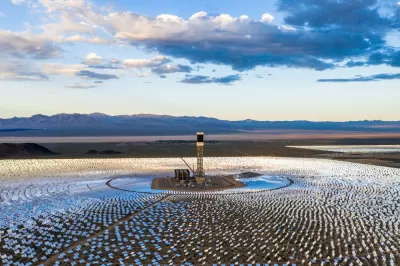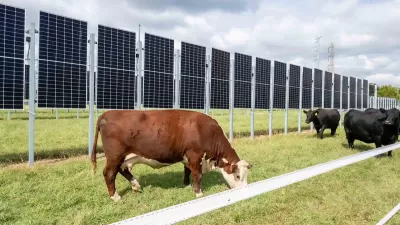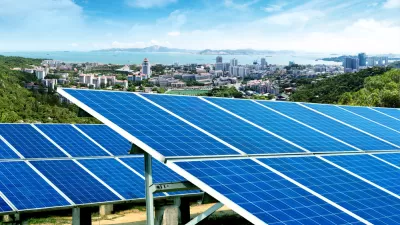The sprawling Mojave Desert plays a key role in carbon sequestration, storing around 10 percent of California’s carbon. But the fragile ecosystem is threatened by large-scale renewable energy projects.

A StoryMap from the Mojave Desert Land Trust outlines the role of the Southwestern desert in fighting climate change, highlighting the conflict between desert conservation and the rise of large-scale solar power generation projects. According to the MDLT, “Around 10% of the state’s carbon is sequestered underground in the desert’s plants and soil. But that carbon storage capacity is under threat from an unlikely source: large-scale renewable energy projects.”
“Arid soils provide the third largest global pool of carbon storage potential. In California, the desert accounts for nearly 10% of the state’s carbon sequestration.” But large-scale solar projects are often “poorly sited in pristine functioning ecosystems,” which can reduce the desert’s capacity to serve as an effective carbon sink.
According to MDLT, “To protect the desert’s fragile resources, we need to focus on leveraging renewable energy options with the least impact on functioning ecosystems.” To this end, “Several innovative technologies capable of assisting in our transition to clean energy, including rooftop and community solar, should be leveraged.” The article encourages boosting community and rooftop solar installations that utilize already developed land to create more solar energy production. “Recent studies have shown that rooftops across the United States offer enough acreage to generate the entire electrical demand of the country and more. One study found that installing 1 GW of rooftop solar would potentially avoid the disturbance of almost 5,200 acres of land – an area around the size of Monterey.”
See the linked StoryMap for more statistics and a visualization of California’s “development focus areas,” previously disturbed land recommended for renewable projects.
FULL STORY: How the desert will help us tackle climate change

Maui's Vacation Rental Debate Turns Ugly
Verbal attacks, misinformation campaigns and fistfights plague a high-stakes debate to convert thousands of vacation rentals into long-term housing.

Planetizen Federal Action Tracker
A weekly monitor of how Trump’s orders and actions are impacting planners and planning in America.

In Urban Planning, AI Prompting Could be the New Design Thinking
Creativity has long been key to great urban design. What if we see AI as our new creative partner?

How Trump's HUD Budget Proposal Would Harm Homelessness Response
Experts say the change to the HUD budget would make it more difficult to identify people who are homeless and connect them with services, and to prevent homelessness.

The Vast Potential of the Right-of-Way
One writer argues that the space between two building faces is the most important element of the built environment.

Florida Seniors Face Rising Homelessness Risk
High housing costs are pushing more seniors, many of them on a fixed income, into homelessness.
Urban Design for Planners 1: Software Tools
This six-course series explores essential urban design concepts using open source software and equips planners with the tools they need to participate fully in the urban design process.
Planning for Universal Design
Learn the tools for implementing Universal Design in planning regulations.
Gallatin County Department of Planning & Community Development
Heyer Gruel & Associates PA
JM Goldson LLC
City of Camden Redevelopment Agency
City of Astoria
Transportation Research & Education Center (TREC) at Portland State University
Jefferson Parish Government
Camden Redevelopment Agency
City of Claremont





























